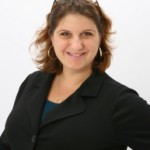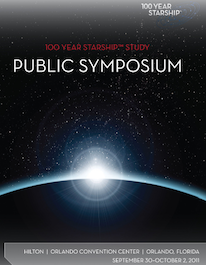 Classroom teacher Heather Wolpert-Gawron teaches in the San Gabriel (CA) Unified School District and blogs at Edutopia, The Huffington Post, and her personal blog TweenTeacher, where a version of this post appeared last fall. She’s also the author of a book for new middle grades teachers, Tween Crayons & Curfews (Eye on Education, 2011).
Classroom teacher Heather Wolpert-Gawron teaches in the San Gabriel (CA) Unified School District and blogs at Edutopia, The Huffington Post, and her personal blog TweenTeacher, where a version of this post appeared last fall. She’s also the author of a book for new middle grades teachers, Tween Crayons & Curfews (Eye on Education, 2011).
On February 6, Heather will offer her first five-week online course for Powerful Learning Practice. The topic, Project-Based Writing, grows out of teaching experiences that began with the events she described in this September post.
____________
by Heather Wolpert-Gawron
This year, I have decided to teach solely through a Project-Based Writing approach. I’m defining PBW as a series of constructed units built around authentic assessment, authentic audience, and authentic learning that incorporates the multiple writing genres. It’s all about blurring the lines between school life and the real world.
The goal: if it doesn’t apply outside of school, then it isn’t worthy enough to teach inside of school.
As a result of this shift (and mind you, it’s only been a couple of weeks since school began), I’ve found that not only do my students enjoy learning more, but I enjoy teaching more. I’m coming to see, strangely enough, that this is mostly due to the fact that with Project-Based Writing, I’m not limiting myself to only teaching what I know. I am the writing authority, but not the content authority. I’m learning with my kids, and in so doing, I’m modeling how to learn.
 Let me give you the best example I can. As I write this, we’re in the midst of a fantastic unit called The Darpa Project. It all began this summer when my husband told me of a cool symposium scheduled for late September in Florida, for which DARPA (the Defense Advanced Research Projects Agency) was seeking presenters. They were asking scientists, futurists, ethicists, and science-fiction writers to apply to attend a forum where they would collectively brainstorm how Earthlings might prepare for a deep space journey to colonize another planet. The project itself is called the 100 Years Starship Study. (I can hear Star Trek music in my brain scoring that title every time I write or type it.)
Let me give you the best example I can. As I write this, we’re in the midst of a fantastic unit called The Darpa Project. It all began this summer when my husband told me of a cool symposium scheduled for late September in Florida, for which DARPA (the Defense Advanced Research Projects Agency) was seeking presenters. They were asking scientists, futurists, ethicists, and science-fiction writers to apply to attend a forum where they would collectively brainstorm how Earthlings might prepare for a deep space journey to colonize another planet. The project itself is called the 100 Years Starship Study. (I can hear Star Trek music in my brain scoring that title every time I write or type it.)
Here’s some of what I learned at the 100YSS website:
The 100 Year Starshipâ„¢ (100YSSâ„¢) study is an effort seeded by DARPA to develop a viable and sustainable model for persistent, long-term, private-sector investment into the myriad of disciplines needed to make long-distance space travel practicable and feasible.
The genesis of this study is to foster a rebirth of a sense of wonder among students, academia, industry, researchers and the general population to consider “why not” and to encourage them to tackle whole new classes of research and development related to all the issues surrounding long duration, long distance spaceflight.
The conference, I discovered, would be segregated into 7 tracks, all focused on different aspects of what it would take to prepare for colonization: the time-distance issues, economic challenges, medical considerations, the need to communicate and publicize the rationale, and so forth.
As I read over the website, it occurred to me that applying to speak at a conference was a kind of persuasive writing exercise. It also occurred to me that studying these different “tracks” and synthesizing one’s research into a proposal was sort of an executive summary.
And lo, a Project Based Writing unit was born.
Planning the starship unit
So I whipped together an iMovie introducing the concept, with some dramatic and suspenseful music thrown in. I cobbled together a pacing guide for myself and a packet with checklist for my students. The packet gave details of how each small “professional community” of experts would be broken down into groups of 7 students. Each student would be responsible for becoming an authority on one of the “tracks.”
The packet also contained various assignments and due dates, leading up to a mock panel that would take place during lunch, where students from all over the school could come to our symposium to learn about colonizing the stars.
And then I had a thought: What if I called my friend in the Caltech patent office and asked if she knew of anyone who could come over during lunchtime to be an authentic audience for my students. Perhaps the person or persons could ask questions like a panel might be asked, or evaluate the presentations in some way. Wow, wouldn’t my students be excited?
So I sent out the email to my buddy, who responded and said she’d ask around and get back to me. Two weeks later I got a call. From NASA.
Where no 8th graders have gone before
 It seems that there is now an additional group of experts added to the agenda for the DARPA 100 Year Starship Study: my students!
It seems that there is now an additional group of experts added to the agenda for the DARPA 100 Year Starship Study: my students!
It’s true. A small panel of my kids will be presenting via Skype (or WebX, TBD) to an audience made up of those very same scientists, futurists, ethicists, and science-fiction writers my students will be researching. My students will be presenting not as scientists, but as youthful experts with a unique vested interest in this project. After all, the adults in the room are going to be planning an adventure for a group of humans several generations beyond their own. My students, on the other hand, will have a direct role in building the future for their own children or grandchildren. They will be creating a legacy that they can carry forward when they leave 8th grade.
But the import of these events — the amazing luck of participating in the Starship symposium — is not what makes this unit so fun to teach. What makes it so very cool for me is how little I know about the content I’m asking my students to learn.
. . . Or their teacher
Sure, I know a lot about writing and reading comprehension and research skills and internet literacy — and that’s ultimately what I’m responsible to teach. However, that’s not what the content of this unit is focused on. It’s focused on science and space, cultural trends and colonization, and that means we’re going to have to learn together.
This is different than reciprocal learning, where I learn from them and they learn from me. This is going on a journey with my students, emailing and exploring and discovering and having head-scratching moments and eureka moments along with them. We will enter the classroom with ideas together; we sit and brainstorm together; and ultimately, we will come away from this experience richer and more knowledgeable together.
I’ve got a few other PBW units for other genres already in the works for later this term: Literary Analysis and Narrative, to name two. I don’t know all the details yet, but I do know that my goal for this year is not to teach only what I already know, but to look for every opportunity to learn together with my students, so that modeling how to learn becomes part of my job.
You can find out more about how Heather’s students fared at the Starship conference here and more details about her new ecourse here.
Latest posts by Powerful Learning Practice (see all)
- Hurry, you do not want to miss out on this… - November 3, 2020
- Resist the Urge to Quit Prematurely - October 26, 2020
- Let’s Move Past Feeling Disconnected from Your Students. Words Matter - October 24, 2020


Trackbacks/Pingbacks